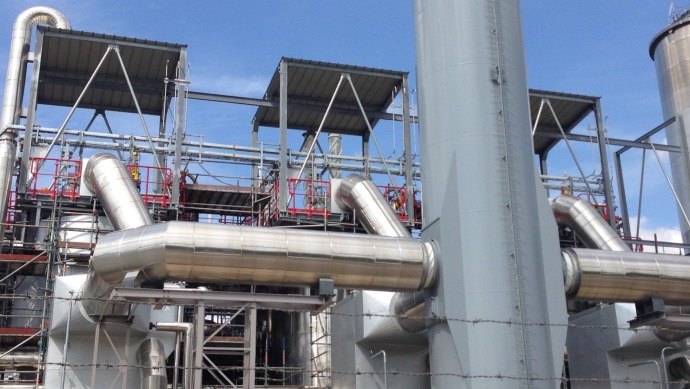Plant operators discuss again and again about the question, if spaces, in which thermal oil plants are operated, must be considered as hazardous zones. The editors had an interview with Dr. Dietmar Hunold, expert on the subject of heat transfer plants.
Dr. Hunold, operators of thermal oil plants are regularly confronted with the question if the spaces, in which thermal oil plants are operated, must be classified as so-called “Ex zone”. Which relevant regulations and directives need to be taken to answer this question?
Hunold: For the erection and the operation of thermal oil plants the European Machinery Directives (2006/42/EC) and Pressure Equipment (97/23/EC) as well as the EN ISO 12100 (Safety of Machinery) and the DIN 4754 (Heat Transfer plants With Organic Transfer Media) are mainly relevant in Germany. The obligations of companies with regard to the hazardous zones result from the European Directive (updated) 2014/34/EU (ATEX). Abroad the national and regional regulations apply.
Which statements regarding explosion protection can be drawn?
First of all, potentially explosive atmospheres are classified in three zones depending on the frequency and duration of the explosive atmosphere. In zone 0 a potentially explosive atmosphere is constantly or frequently existent, in zone 1 this atmosphere can occasionally and in zone 2 not at all or only briefly occur. Furthermore it is to consider that three conditions have to met simultaneously for an explosion: First, a sufficient concentration of flammable substances within the explosion limit; second , a dangerous amount of explosive gas-air-mixture (atmosphere) and third, the existence of an effective ignition source. Is one of these conditions eliminated, the explosion protection is effectively ensured.
What does that mean to the sector of the thermal oil plant?
In case of thermal oil plants, we have to deal with organic heat carriers most of the time. For the assessment of the explosiveness of these fluids two characteristics are essential that are typically used for organic heat carriers: The so-called “flash point” and the “auto-ignition point”.
Please explain this.
The flash point indicates the temperature at which the heat carrier evaporates and can form an ignitable mixture with the ambient air. The auto-ignition point describes the temperature at which the heat carrier ignites spontaneously without any influence from an external ignition source. The standard organic heat carriers are usually operated below their auto-ignitaion point but above their flash point. Basically the heat carrier could cause an explosion hazard which however can be eliminated by simple measures.
Which measures are this?
These are stipulated by the Technical Rules For Operating Safety/Hazardous Materials (TRBS 2152). According to these rules the incidence of a dangerous hazardous atmosphere is avoided or at least effectively restricted by the tightness of the heat carrier system. Also as per the explosion protection rules of the Hauptverband der Berufgenossenschaften (German Federation of institutions for statutory accidents insurance and prevention) (BGR 104) there is no necessity to design electric components explosion-proof in thermal oil plants when the plant is “technically tight”. Regarding the different terms for tightness and interpretations provisions I refer at this point to the corresponding regulation for operational safety. The DIN 4754 contains also safety requirements to the construction of heat transfer plants. The decisive criterion her is also that the heat transfer plant was designed, constructed and erected according to the “technical tightness”.
What else is to consider?
In every plant there are potentially dangerous sectors such as e.g. sealings on flanges or pumps, safety valves and draining pipes or vessels that demand specific attention. Especially in these sectors further measures, if necessary, must be provided in order to effectively eliminate the incidence of an explosive atmosphere. Basically we absolutely recommend to consult an expert for the assessment of the own plant situation.
Your conclusion?
Principally a heat transfer plant must not be classified as explosive when it is consequently designed, constructed, built and operated according to the standards mentioned above. A case-by-case assessment always needs to be done.





Comments are closed.